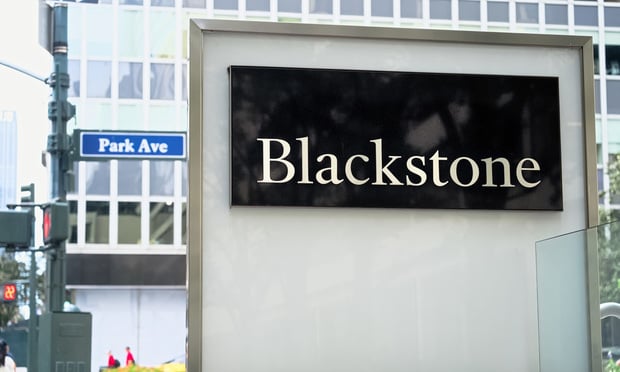
NEW YORK CITY—The Manhattan retail market remains in a correction period as landlords in most markets in the borough are forced to reduce rents and offer attractive concessions to strike lease deals.
The Real Estate Board of New York in its Fall 2017 Manhattan Retail Report notes that 13 of Manhattan's top 17 retail shopping corridors reported declines in average per-square-foot asking rents this year as compared to 2016.
In REBNY's Spring 2017 Manhattan Retail report, 14 of the top 17 Manhattan retail corridors suffered declines in average asking rents.
The REBNY fall report reveals that landlords are inking shorter-term lease transactions and agreeing to more flexible terms to fill vacant space. The retail brokers that make up REBNY's Retail Report Advisory Group put a positive spin on the ongoing retail correction, noting that it may prove healthy for the short and long-term viability of the Manhattan retail leasing market. In the near-term, retail owner representatives in REBNY's Advisory Group say that rent adjustments offer a chance for quality retailers to explore markets that were previously too expensive. Brokers in the Retail Advisory Group also say the current environment provides an opportunity for landlords and tenants to discover pricing in a market still learning the effects of online retailing.
“Across Manhattan's wide-ranging retail landscape, personal consumption fundamentals and retail demand remain strong as we head into the holiday season,” says REBNY president John Banks. “Our advisory group sees this period of declining average asking rents as an opportunity for owners and retailers to find a new equilibrium rent level that promotes long-term tenancy.”
“This fall, our Manhattan Retail Report Advisory Group observed significant transformations underway in the role that physical retail plays in a company's overall sales strategy. When demand is low for traditional spaces and long-term leases, an owner can experiment with tenants who are trying new ideas in presenting their retail concepts, brands, and products,” adds Brian Klimas, VP for research at REBNY. “Should these ideas eventually become the norm in retailing, our Advisory Group members note that the owner will be in an early and advantageous position to provide the right space solutions for retail tenants.”
Some of the few bright spots in the retail sector that REBNY describes as “resilient” were the Flatiron Fifth Avenue corridor, between 14th and 23rd streets, where the ground floor retail average asking rent in the fall of this year rose 15% to $449-per-square-foot year-over-year and the Lower Manhattan Broadway corridor, between Battery Park and Chambers Street, the average asking rent increased 2% year-over-year to $374-per-square-foot.
Upper Fifth Avenue, between 49th and 59th Streets, as well as East 86th Street, between Lexington and Second Avenue, both saw average asking rents rise this fall compared to 12 months earlier. Those corridors had very limited ground floor retail availability, which made market conditions more difficult to discern, REBNY notes. Upper Fifth Avenue average asking rents for ground floor retail space rose 12% from the fall of 2016 to the fall of 2017 to $3,900-per-square-foot. Rents on East 86th Street between Lexington and Second avenues increased 5% during that same period to $450-per-square-foot.
Ground floor retail space on Bleecker Street, between Seventh Avenue South and Hudson Street, experienced the largest average asking rent reduction this fall compared to last year—a 25% decline to $351-per-square-foot. REBNY's Manhattan Retail Report Advisory Group notes that asking rents in this corridor greatly overshot their viable range due to a lack of weekday foot traffic and being better suited to cater to local neighborhood needs.
The REBNY Advisory Group expressed concern over what it terms as “restrictive zoning regulations” on ground floor retail spaces on the Upper West Side. Those zoning regulations that limit the storefront size have cut down the number of viable tenants for the space in a market that is already struggling with reduced demand. The fall 2017 average asking rent of $291-per-square-foot on Broadway, between West 72nd and West 86th streets, was down 15% from last fall. On Columbus Avenue, between West 66th and West 79th streets, the average asking rent fell 16% to $338-per-square-foot during that same period.
The REBNY report notes several other prevailing trends in the Manhattan retail market, including tenants who are searching out for value in the market have been open to consider side street space near major retail corridors. The Advisory Group also states that some value-oriented Downtown side streets, such as areas of Lafayette Street, and side streets of SoHo have a “hipness factor” with some fashion streetwear brands.
The report also states, “pop-up shops on short-term leases have continued to proliferate around the city with owners being more amenable to flexible deals. However, pop-ups are facing big challenges when owners are contractually obligated to keep high rent levels due to financing agreements.”

The Real Estate Board of
In REBNY's Spring 2017 Manhattan Retail report, 14 of the top 17 Manhattan retail corridors suffered declines in average asking rents.
The REBNY fall report reveals that landlords are inking shorter-term lease transactions and agreeing to more flexible terms to fill vacant space. The retail brokers that make up REBNY's Retail Report Advisory Group put a positive spin on the ongoing retail correction, noting that it may prove healthy for the short and long-term viability of the Manhattan retail leasing market. In the near-term, retail owner representatives in REBNY's Advisory Group say that rent adjustments offer a chance for quality retailers to explore markets that were previously too expensive. Brokers in the Retail Advisory Group also say the current environment provides an opportunity for landlords and tenants to discover pricing in a market still learning the effects of online retailing.
“Across Manhattan's wide-ranging retail landscape, personal consumption fundamentals and retail demand remain strong as we head into the holiday season,” says REBNY president John Banks. “Our advisory group sees this period of declining average asking rents as an opportunity for owners and retailers to find a new equilibrium rent level that promotes long-term tenancy.”
“This fall, our Manhattan Retail Report Advisory Group observed significant transformations underway in the role that physical retail plays in a company's overall sales strategy. When demand is low for traditional spaces and long-term leases, an owner can experiment with tenants who are trying new ideas in presenting their retail concepts, brands, and products,” adds Brian Klimas, VP for research at REBNY. “Should these ideas eventually become the norm in retailing, our Advisory Group members note that the owner will be in an early and advantageous position to provide the right space solutions for retail tenants.”
Some of the few bright spots in the retail sector that REBNY describes as “resilient” were the Flatiron Fifth Avenue corridor, between 14th and 23rd streets, where the ground floor retail average asking rent in the fall of this year rose 15% to $449-per-square-foot year-over-year and the Lower Manhattan Broadway corridor, between Battery Park and Chambers Street, the average asking rent increased 2% year-over-year to $374-per-square-foot.
Upper Fifth Avenue, between 49th and 59th Streets, as well as East 86th Street, between Lexington and Second Avenue, both saw average asking rents rise this fall compared to 12 months earlier. Those corridors had very limited ground floor retail availability, which made market conditions more difficult to discern, REBNY notes. Upper Fifth Avenue average asking rents for ground floor retail space rose 12% from the fall of 2016 to the fall of 2017 to $3,900-per-square-foot. Rents on East 86th Street between Lexington and Second avenues increased 5% during that same period to $450-per-square-foot.
Ground floor retail space on Bleecker Street, between Seventh Avenue South and Hudson Street, experienced the largest average asking rent reduction this fall compared to last year—a 25% decline to $351-per-square-foot. REBNY's Manhattan Retail Report Advisory Group notes that asking rents in this corridor greatly overshot their viable range due to a lack of weekday foot traffic and being better suited to cater to local neighborhood needs.
The REBNY Advisory Group expressed concern over what it terms as “restrictive zoning regulations” on ground floor retail spaces on the Upper West Side. Those zoning regulations that limit the storefront size have cut down the number of viable tenants for the space in a market that is already struggling with reduced demand. The fall 2017 average asking rent of $291-per-square-foot on Broadway, between West 72nd and West 86th streets, was down 15% from last fall. On Columbus Avenue, between West 66th and West 79th streets, the average asking rent fell 16% to $338-per-square-foot during that same period.
The REBNY report notes several other prevailing trends in the Manhattan retail market, including tenants who are searching out for value in the market have been open to consider side street space near major retail corridors. The Advisory Group also states that some value-oriented Downtown side streets, such as areas of Lafayette Street, and side streets of SoHo have a “hipness factor” with some fashion streetwear brands.
The report also states, “pop-up shops on short-term leases have continued to proliferate around the city with owners being more amenable to flexible deals. However, pop-ups are facing big challenges when owners are contractually obligated to keep high rent levels due to financing agreements.”
Want to continue reading?
Become a Free ALM Digital Reader.
Once you are an ALM Digital Member, you’ll receive:
- Breaking commercial real estate news and analysis, on-site and via our newsletters and custom alerts
- Educational webcasts, white papers, and ebooks from industry thought leaders
- Critical coverage of the property casualty insurance and financial advisory markets on our other ALM sites, PropertyCasualty360 and ThinkAdvisor
Already have an account? Sign In Now
*May exclude premium content© 2025 ALM Global, LLC, All Rights Reserved. Request academic re-use from www.copyright.com. All other uses, submit a request to [email protected]. For more information visit Asset & Logo Licensing.








